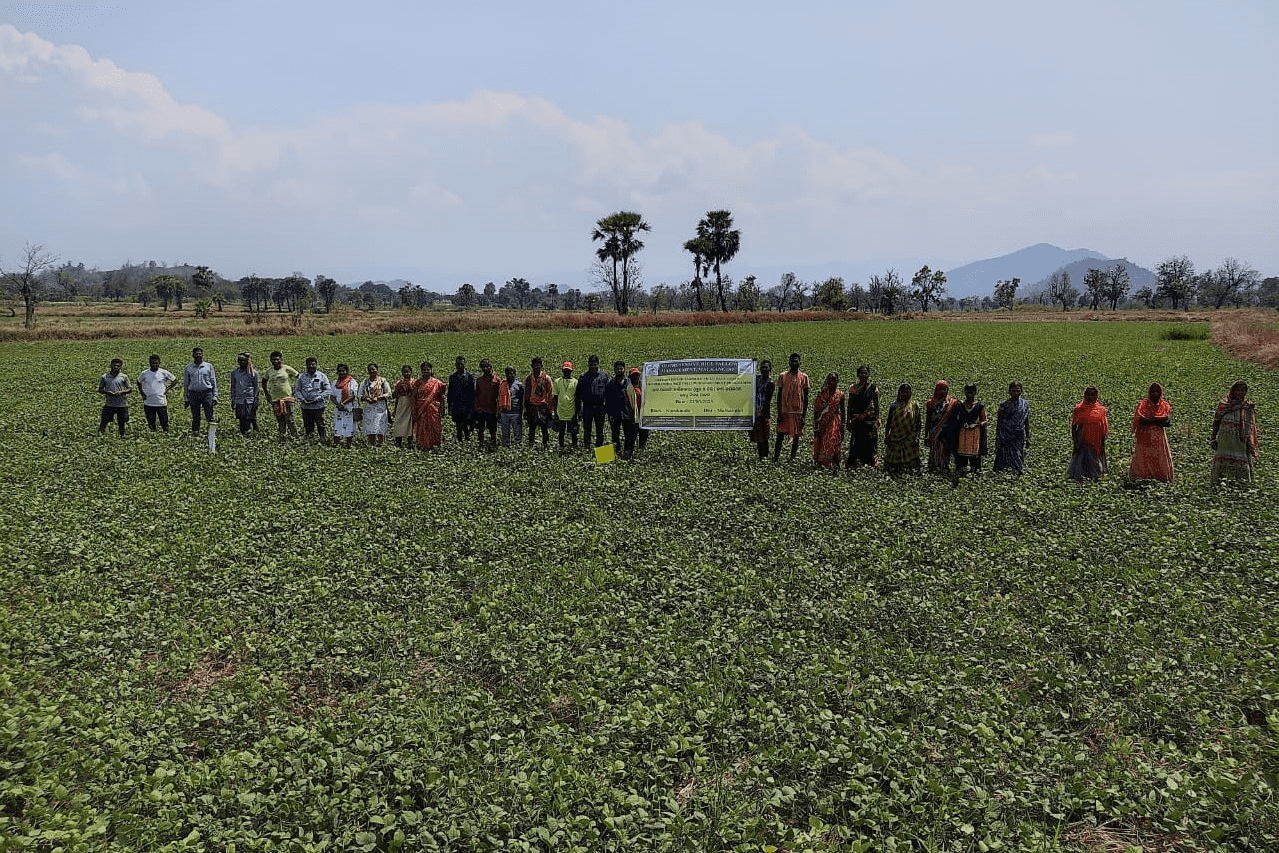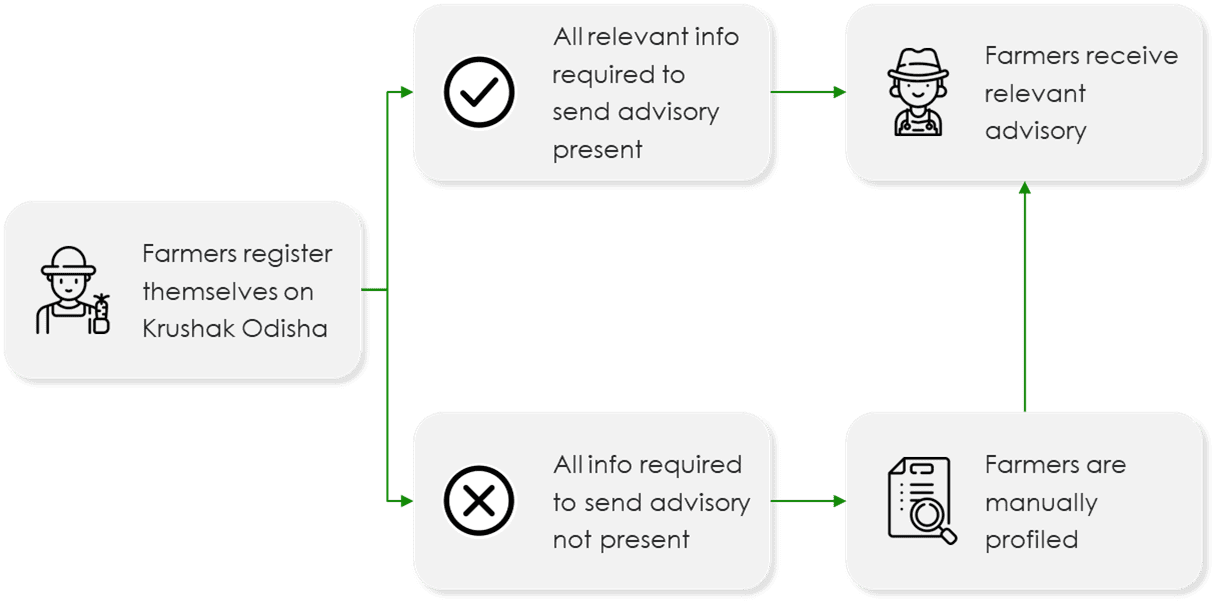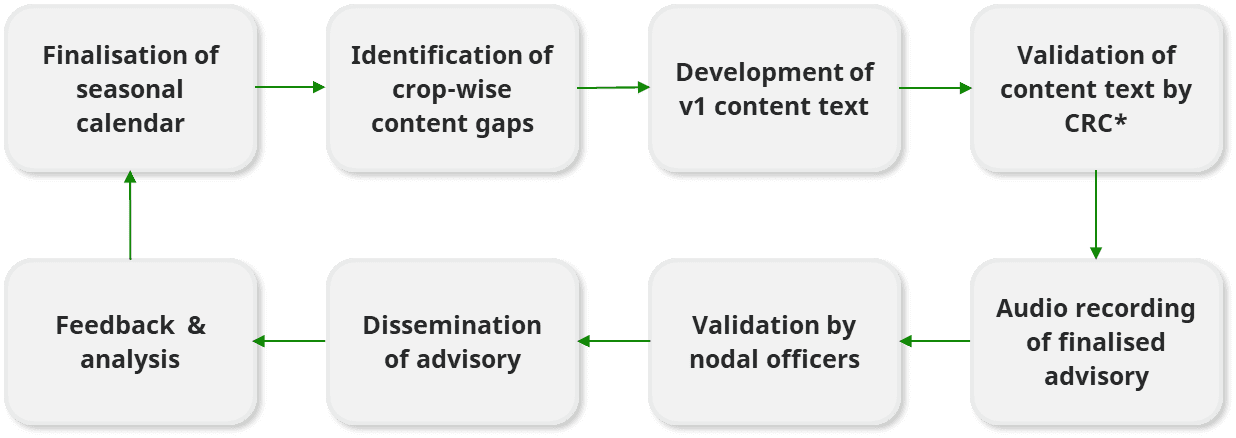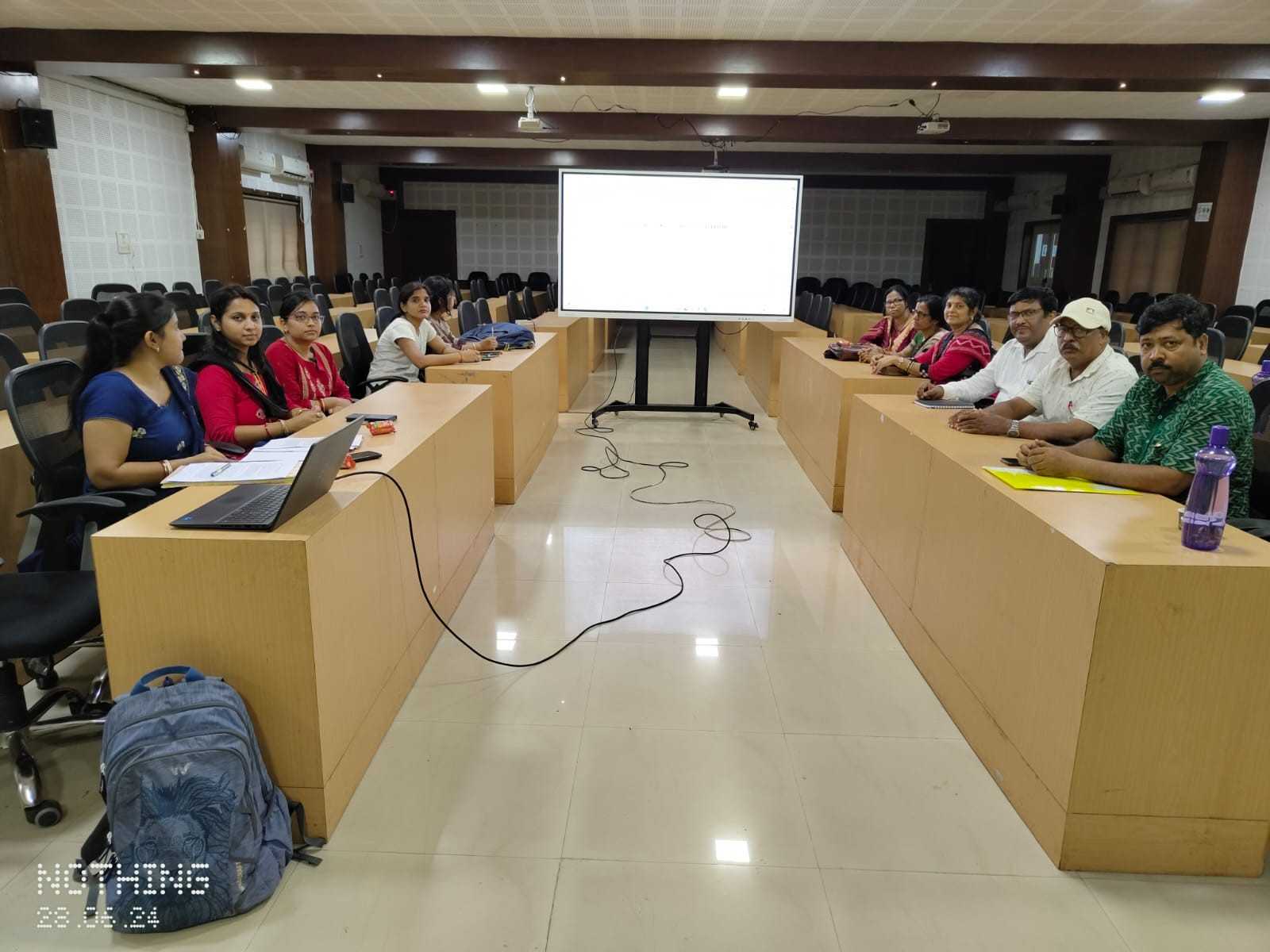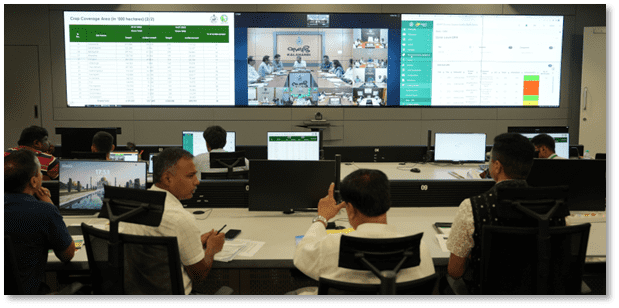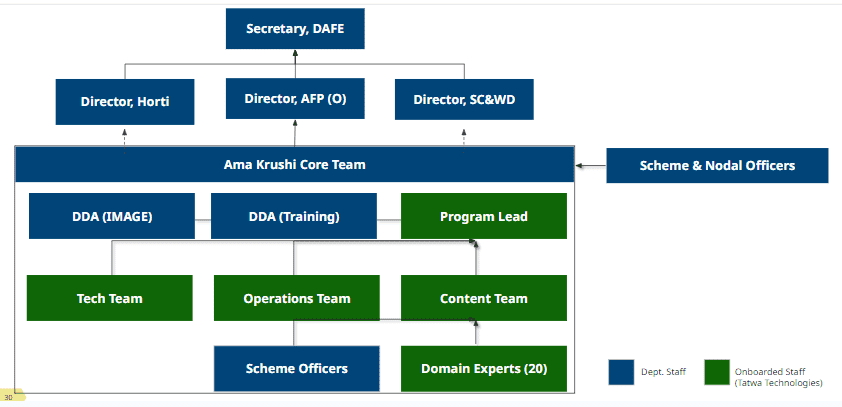1. Introduction: Importance of Extension in Agriculture
Odisha is home to over 80 lakh farmers, with more than 90% of them having small or marginal landholdings. Whilst the average income of farmers in Odisha is low at INR 9,200/month, it is growing at a healthy CAGR of 17%. The Government of Odisha, in 2020, launched the Samruddhi Policy, which focuses on improving farmers’ income and well-being through the integration of technology and agriculture and a focus on improving the engagement of farmers with the private ecosystem. In addition to small landholdings, one of the structural challenges that characterize agriculture in Odisha is the diverse and erratic climate of Odisha. With 8 different agro-climatic zones, the state is susceptible to draughts, cyclones, and pest attacks alike: all of which contribute to crop loss and deter income enhancement in agriculture.
Agricultural extension, the process of providing farmers with the knowledge and techniques needed to improve their agricultural outcomes, is an important lever in improving farmers’ income. It bridges the gap between scientific research and the farming community, ensuring that the latest advancements in agriculture are accessible to those working on the ground. The key objectives of providing extension services to farmers are:
- Increasing profitability and income through the adoption of improved agricultural practices which helps in reducing crop loss, improving yield & produce
- Awareness about the various government schemes and private sector opportunities. For instance, they might inform farmers about crop insurance programs that protect them against losses or interest waivers by the government that can finance better farming equipment and inputs.
- Promoting sustainable agriculture through the promotion of crop diversification, soil health management, and climate-resilient techniques
Through the provision of effective extension services, governments, communities and farmers can improve crop selection, yield, and production, which impacts the financial and environmental bottom lines positively.
Extension is typically delivered through trained front-line government employees: Village Agricultural Workers (VAWs). VAWs offer guidance and support to farmers, which includes teaching new farming methods, introducing advanced technologies, providing pest and disease management strategies, and advising on the efficient use of resources such as water and fertilisers. In welfare states like India, VAWs are also responsible for delivering government schemes and benefits. Traditionally, service & extension delivery from VAWs to farmers occurs through direct 1:1 interactions, or at trainings in small cohorts.
Extension Workers organising a training camp on soil health in Malkangiri, Odisha
Even when equipped with effective training and tools, this method of extension has its limitations: the VAW to farmer ratio in Odisha is as high as 1:2300. This impacts the timeliness and quality of extension available. Farmers seldom receive the personalized and timely advice they need, with geographically dispersed communities being further separated from extension services. Moreover, socio-cultural barriers can prevent certain groups, particularly women and marginalized communities, from seeking extension from VAWs, further widening the gap between those who benefit from modern agricultural knowledge and those who do not. This gap translates into the inability of the system to equip farmers at scale with the information required to preserve and enhance their well-being.
2. Background of Krushi Samruddhi
Solving the problem of extension requires a dual focus on two critical aspects of service delivery: scale and quality. While traditional physical extension methods have shown effectiveness within localized clusters, expanding this success to a state-wide level necessitates the usage of technology. This is essential to achieve the necessary personalisation, given the vast diversity in cropping practices and climatic conditions across different regions. In Odisha, this challenge is particularly pronounced due to the domination of small landholdings in the agricultural landscape & unpredictable climatic conditions. Recognising the challenges with the traditional extension methods and the importance of technology, the Government of Odisha and the Bill & Melinda Gates Foundation (BMGF) launched Ama Krushi in 2018, an initiative aimed at providing digital extension services to farmers. Push-based Interactive Voice Response System (IVRS) advisory was envisaged as the mechanism for providing digital extension. IVRS is an automated telecommunication system that interacts with callers through pre-recorded messages and voice inputs. To ensure the advisories were relevant, farmers were manually profiled to identify their specific cropping practices. This information was then mapped to determine their advisory needs based on which advisory content was developed. After verification of recorded messages, they were disseminated to the farmers to their registered phone numbers.
Following an initial assessment of the system and its impact, it was decided to scale Krushi Samruddhi to all farmers in Odisha.
3. Implementing Krushi Samruddhi at Scale
To be able to deliver quality IVRS advisory at scale, four things were primarily done:
- Identification of advisory requirements for farmers through analysis of their cropping & landholding patterns
- Creation of a comprehensive advisory content library covering all prevalent commodities and sub-domains of agriculture
- Regular & thorough validation of the quality all advisory content
- Ensuring timeliness of advisory dissemination, especially in times of climate emergencies
3.1. Streamlining Farmer Onboarding & Advisory Need Identification via Krushak Odisha Database
To deliver effective IVRS agro-advisories, it is crucial to understand which advisories to send to each farmer. Krushi Samruddhi addressed this by integrating with the Krushak Odisha database to identify individual farmers' needs by assessing crop practices, irrigation availability, and agro-climatic conditions of the farm plot.
Krushak Odisha is the Government of Odisha’s Aadhaar-authenticated farmer registry which contains 95+ data points on 80+ lakh farmers. Krushak Odisha is updated dynamically by farmers and through integrations with the Digital Crop Survey, Soil Health Card, and other databases. Both systems are linked through APIs, which ensure the daily updation of advisory requirements-based data updates, and onboarding of newly registered farmers, allowing for accurate and contextualised need identification.
API flow from Krushak Odisha for updation of farmers’ advisory needs through
3.2. Augmenting the Advisory Content Repository
Having accurate and relevant advisory content is essential to ensure the usefulness and implementation of advisory messages. To enable content development & verification, a multi-directorate team consisting of government officers and experts from Odisha University of Agriculture and Technology, called the Content Recommendation Committee (CRC) was formed. This enabled the expansion of advisories into horticulture, fisheries, and livestock, covering over 100 commodities and the expansion of the content repository expanded by 500%, growing to over 2,500 pieces.
The CRC also developed a crop calendar: which guides the crop-wise advisory requirements across a typical agricultural season. Subsequently, a cadence was established to identify and fill content gaps in six-month seasonal cycles, ensuring that all relevant topics were covered. The scope of IVRS advisories also expanded from purely technical content to include schematic content (eg: registration process for direct income transfer scheme, information on interest-free crop loans) aimed at driving direct benefit delivery to farmers.
Lastly, Krushi Samruddhi is being leveraged to deliver scheme-specific advisory to beneficiaries of crop demonstration schemes to supplement progressive practices propagated in the scheme and improve uptake of scheme components amongst the beneficiary cohort.
More than 8 lakh farmers are receiving scheme-specific advisory messages, covering over 75% of demonstration scheme beneficiaries in the state.
Flow for Content Development and Validation
Quality Assurance on Accuracy and User-Centricity
To ensure the accuracy and user-centricity of the advisories, multiple levels of checks and validation were implemented for the content developed. Weekly meetings of the CRC were instituted to account for climatic disruptions whilst adhering to the crop calendar for advisory scheduling and double-clicking on the quality and content of advisory messages to be disseminated in that week. Multi-level IVRS recording checks were initiated, enabling qualitative improvements to enhance user-centricity (eg: reduction in advisory length, modification of advisory tone etc.). This process ensured that the advisories were not only accurate but also easily understandable and actionable for farmers.
Weekly Content Recommendation Committee Meeting
3.3. Coordinated Emergency Response
In times of emergencies, such as pest attacks or weather disruptions, coordination with stakeholders is vital. Established forums and processes such as the Crop Weather Watch Group were leveraged for identifying advisory requirements during such emergencies. Linkages with the Krushi Samiksha Kendra (KSK): the nerve centre of the Department of Agriculture was also leveraged to deliver proactive advisories upon anticipated stress, ensuring that farmers received timely information to mitigate potential losses.
Coordination of Emergency Response Advisory during a Review Meeting with Districts
4. Impact of Krushi Samruddhi Live IVRS
Krushi Samruddhi disseminates over 20 unique advisory messages monthly to 6.9 million farmers. The average pick-up rate of Krushi Samruddhi advisories is ~40% and the listening rate (listening duration compared to advisory length) is ~50%.
An impact evaluation of Krushi Samruddhi was conducted by a team led by Dr Shawn Cole (Harvard Business School). The study focused on ~13.5K paddy farmers across 18 blocks in five districts of Odisha and sought to measure Krushi Samruddhi's effectiveness in enhancing agricultural outcomes across two cropping cycles. Metrics such as the adoption of progressive farming techniques, productivity and profitability were analysed through surveys, system-generated data, and satellite data. This study revealed:
- High likelihood of farmers learning & disseminating best practices (measured via standard deviation)
- 10% reduction in the likelihood of severe crop loss, with specific reductions of 25.8% during weather shocks and 26.4% during pest and disease outbreaks.
- 6-10% increase in harvest among farmers experiencing climate shocks
- An average increase in profit of Rs 2,568 per year per farmer (~8.2%), 105% in areas severely affected by excess rainfall.
- An estimated marginal benefit-cost ratio of 16:1
Similar assessments reveal that 91% of farmers consider the advisory received by them to be useful & relevant, with 95% of farmers applying advisories in practice experiencing improvement in yield or reduction in crop loss.
5. Sustaining Krushi Samruddhi in the Government System
In order to ensure the smooth functioning of Krushi Samruddhi with the Government System and sustain the impact generated, administrative and technical enablers established:
- Team: Krushi Samruddhi consists of a team of domain experts, operations team and technologists who are responsible for day-to-day operations. Constant oversight over operations and quality is maintained by nodal officers of the Department, who are supported by the Content Recommendation Committee. Regular reviews and convergence meetings are held under the chairmanship of the Principal Secretary and the Director of Agriculture and Food Production through the Krushi Samiksha Kendra.
Structure of the Krushi Samruddhi Team within the Department of Agriculture & Farmers’ Empowerment
- Technological Infrastructure: Krushi Samruddhi has also been equipped with the required technological infrastructure which includes tech systems and servers in the Odisha State Data Centre.
- Processes: Processes have been set up within the Department to ensure quality, scale, and efficiency of service delivery. This includes seasonal gap identification on content created vis-a-vis advancements in research and advisory guidelines, weekly validation of advisory content, randomised Q/A checks with farmers, and forums to coordinate advisory during climate emergencies.
Krushi Samruddhi is poised to revolutionize income generation for the 80+ lakh farmers in Odisha by providing crucial advisory services tailored to their needs in the coming years.

